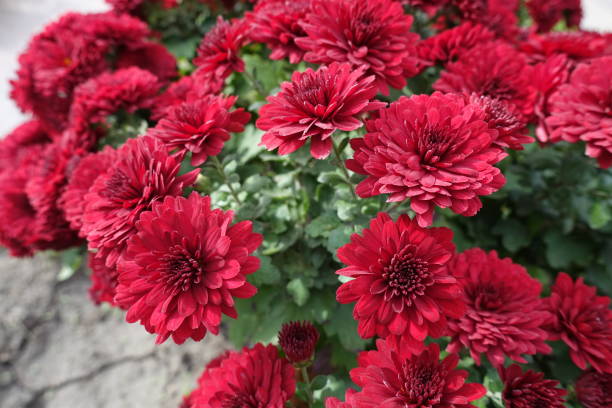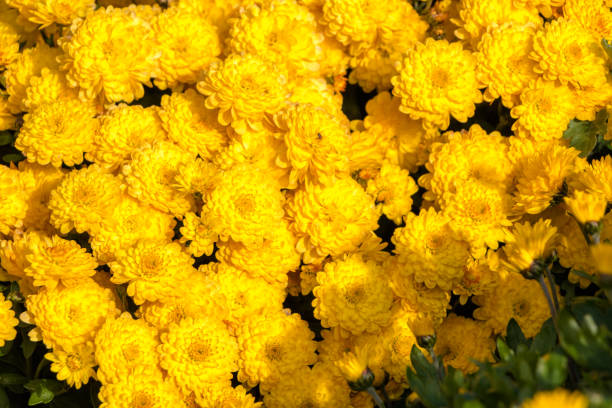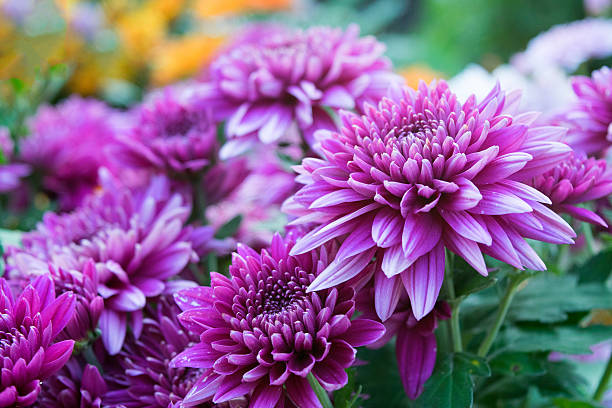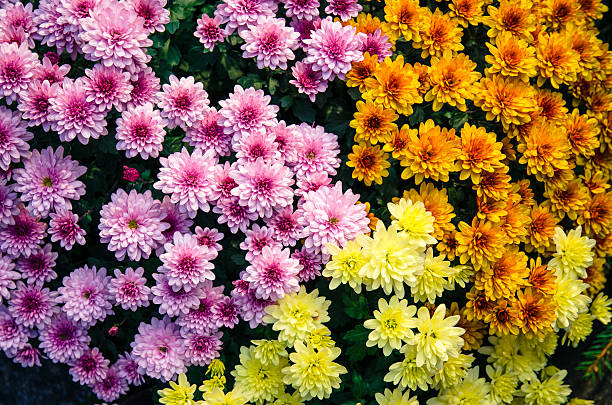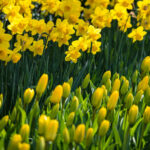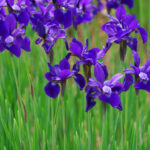Chrysanthemums, often referred to simply as mums, are one of the most beloved flowers in the world, known for their vibrant colors, striking forms, and rich symbolism. Native to East Asia, particularly China and Japan, chrysanthemums have a long and storied history, serving as cultural icons, medicinal herbs, and ornamental plants for centuries. Their striking beauty, variety, and adaptability have made them popular across the globe, from Asia to Europe and North America. This article delves into the fascinating history, varieties, cultural significance, uses, and care tips for chrysanthemums, celebrating their beauty and importance as the quintessential flower of autumn.
Historical Roots and Origins
Chrysanthemums have a history that stretches back thousands of years. They are believed to have originated in China over 2,500 years ago, where they were initially cultivated as medicinal herbs. The flower’s introduction to China dates as far back as the 15th century BC, during the Shang Dynasty. Chrysanthemums were thought to have properties that could prolong life, and they were revered for their medicinal benefits, particularly in treating headaches, reducing inflammation, and aiding in digestion.
The chrysanthemum’s name is derived from the Greek words “chrysos” (meaning gold) and “anthemion” (meaning flower), a nod to the original golden-yellow blooms of the plant. Over time, as more colors and varieties were cultivated, the plant became highly valued for its ornamental qualities as well.
In the 8th century, chrysanthemums were introduced to Japan, where they quickly became a symbol of the imperial family. The flower became so revered in Japan that the imperial seal features a chrysanthemum with 16 petals, and the Japanese emperor is often referred to as the “Chrysanthemum Throne.” Japan even celebrates National Chrysanthemum Day on September 9th, known as the Festival of Happiness, further solidifying the flower’s place in Japanese culture.
Chrysanthemums spread to Europe in the 17th century, where they became popular ornamental plants in gardens and homes. They reached North America in the 18th century, where they gained widespread popularity due to their hardiness and stunning autumn blooms.
Chrysanthemum Varieties
One of the reasons chrysanthemums have become so widely adored is their incredible diversity. With over 40 species and thousands of varieties, chrysanthemums come in a wide range of shapes, sizes, and colors, making them a versatile flower for gardens, floral arrangements, and landscaping.
Here are some of the most popular types of chrysanthemums:
- Single and Semi-Double Chrysanthemums: These mums have a simple daisy-like appearance with one or two layers of petals surrounding a central disc. The contrast between the brightly colored petals and the central disc gives these flowers a charming, natural look.
- Pompon and Button Chrysanthemums: These varieties have small, round, tightly packed petals that form a spherical bloom. Pompons tend to have a larger bloom, while button mums are more compact and petite, making them perfect for bouquets and arrangements.
- Spider Chrysanthemums: Spider mums are known for their unique appearance, with long, tubular petals that curve or hang loosely around the flower’s center, resembling a spider’s legs. This variety adds an artistic and dramatic touch to any garden or floral display.
- Quill Chrysanthemums: These mums have thin, straight petals that look like needles or quills. The petals can be tightly packed or more loosely arranged, depending on the variety, giving these blooms an elegant, structured appearance.
- Anemone Chrysanthemums: These flowers are characterized by a raised central disc that is surrounded by flat or tubular petals. The contrasting textures between the disc and the petals make anemone mums stand out in any setting.
- Incurved Chrysanthemums: With petals that curve inward to form a globe-shaped bloom, incurved chrysanthemums are often used in competitive flower shows due to their perfectly spherical form and dense layers of petals.
- Reflex Chrysanthemums: The petals of reflex mums curve downward away from the center, creating a layered and full look. These flowers often have large, bold blooms and are popular for dramatic garden displays.
Chrysanthemums are also available in a wide range of colors, from traditional yellows and golds to reds, purples, pinks, whites, and even bi-colored varieties. Their versatility in both form and color makes them a favorite choice for gardeners and floral designers alike.
Symbolism and Cultural Significance
Chrysanthemums have deep cultural meanings in many parts of the world. In Asia, particularly in China and Japan, chrysanthemums are seen as symbols of longevity, happiness, and prosperity. In China, they are one of the “Four Gentlemen” of Chinese art, representing autumn in classical Chinese painting. They are also associated with the idea of living a simple, quiet life in harmony with nature. During the Double Ninth Festival in China, chrysanthemums are used to honor ancestors and loved ones.
In Japan, chrysanthemums are the symbol of the Imperial Family, representing perfection and nobility. The flower is celebrated during the Chrysanthemum Festival (Kiku Matsuri), where different varieties of chrysanthemums are displayed in elaborate arrangements at shrines and gardens across the country. The chrysanthemum is also the national flower of Japan and features prominently in both cultural and state ceremonies.
In Europe and North America, chrysanthemums often carry different meanings. In many parts of Europe, particularly in France, chrysanthemums are associated with mourning and are used as flowers of remembrance, especially on All Saints’ Day (November 1), when families place mums on the graves of loved ones. In contrast, in the United States, chrysanthemums are more commonly seen as symbols of friendship and joy, and they are frequently used in floral arrangements to celebrate autumn.
Medicinal Uses and Health Benefits
Aside from their ornamental value, chrysanthemums have a long history of medicinal use, particularly in traditional Chinese medicine. Chrysanthemum tea, made from dried chrysanthemum flowers, has been used for centuries to treat a range of ailments, thanks to its anti-inflammatory, antioxidant, and cooling properties. It is believed to help with fever, headaches, and eye strain, and it is also said to boost the immune system and improve digestion.
Chrysanthemum extract is sometimes used in skincare products due to its anti-aging and soothing properties, helping to reduce inflammation and protect the skin from environmental damage.
Growing and Caring for Chrysanthemums
Chrysanthemums are relatively easy to grow and maintain, making them a favorite among gardeners. Here are some tips for growing healthy and vibrant chrysanthemums:
- Planting Location: Chrysanthemums thrive in full sunlight, so choose a spot in your garden that receives at least six hours of direct sunlight each day. They prefer well-drained soil that is rich in organic matter.
- Watering: Keep the soil consistently moist but not waterlogged. Chrysanthemums need regular watering, especially during hot weather. Water at the base of the plant to avoid wetting the leaves, which can lead to fungal diseases.
- Fertilizing: Use a balanced fertilizer every 4-6 weeks during the growing season to promote healthy blooms. Fertilizers high in phosphorus are particularly helpful in encouraging flower production.
- Pinching and Pruning: To encourage bushier growth and more blooms, pinch off the tips of the stems in early summer. This will help the plant produce more side branches and result in a fuller appearance. Remove spent flowers to encourage continuous blooming.
- Winter Care: In colder climates, chrysanthemums may need some protection during the winter months. After the first frost, cut the stems back to about 6 inches and mulch the base of the plant to protect the roots. In milder climates, chrysanthemums can often survive the winter and bloom again the following year.
- Pests and Diseases: Chrysanthemums are relatively hardy but can be prone to pests such as aphids, spider mites, and thrips. Keep an eye on your plants and treat any infestations promptly with insecticidal soap or neem oil. Fungus can also be an issue, especially in humid climates, so ensure good air circulation around the plants.
Conclusion: The Enduring Appeal of Chrysanthemums
Chrysanthemums are much more than just beautiful flowers. Their rich history, cultural significance, and medicinal properties make them a flower that transcends simple aesthetics. Whether you’re admiring them in a garden, using them in a tea for health benefits, or honoring loved ones with their blooms, chrysanthemums continue to hold a special place in cultures around the world.
With their wide variety of shapes, colors, and sizes, chrysanthemums are a versatile and resilient addition to any garden or floral arrangement. As the flower of autumn, they provide a burst of color and beauty as the year comes to a close, reminding us of nature’s ability to inspire, heal, and bring joy in every season.

